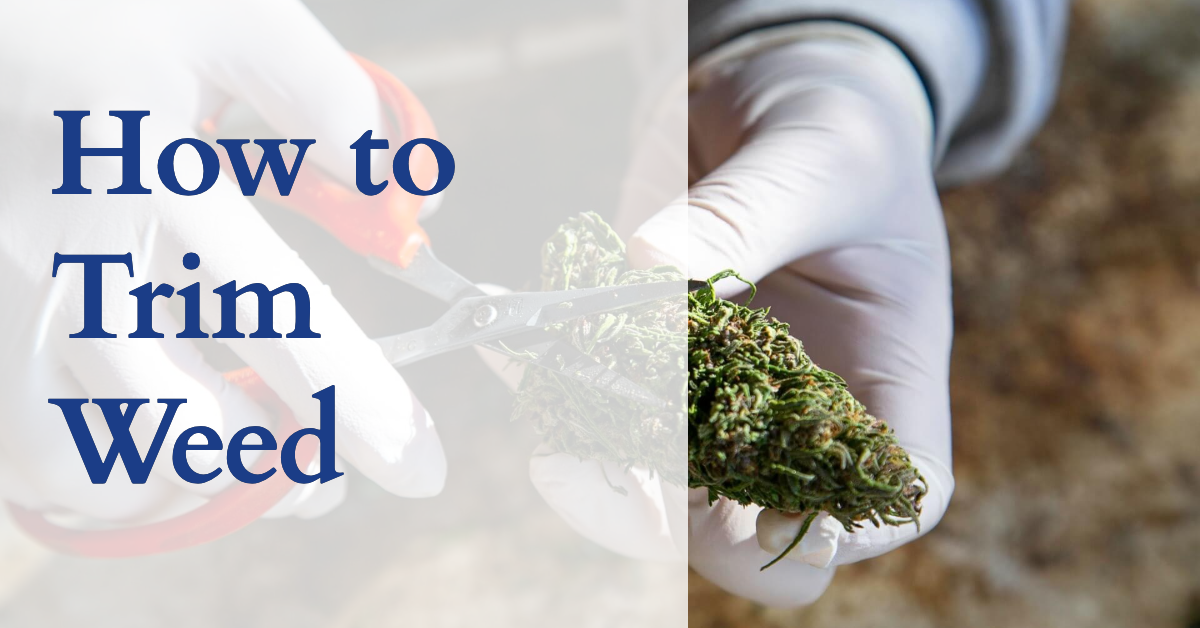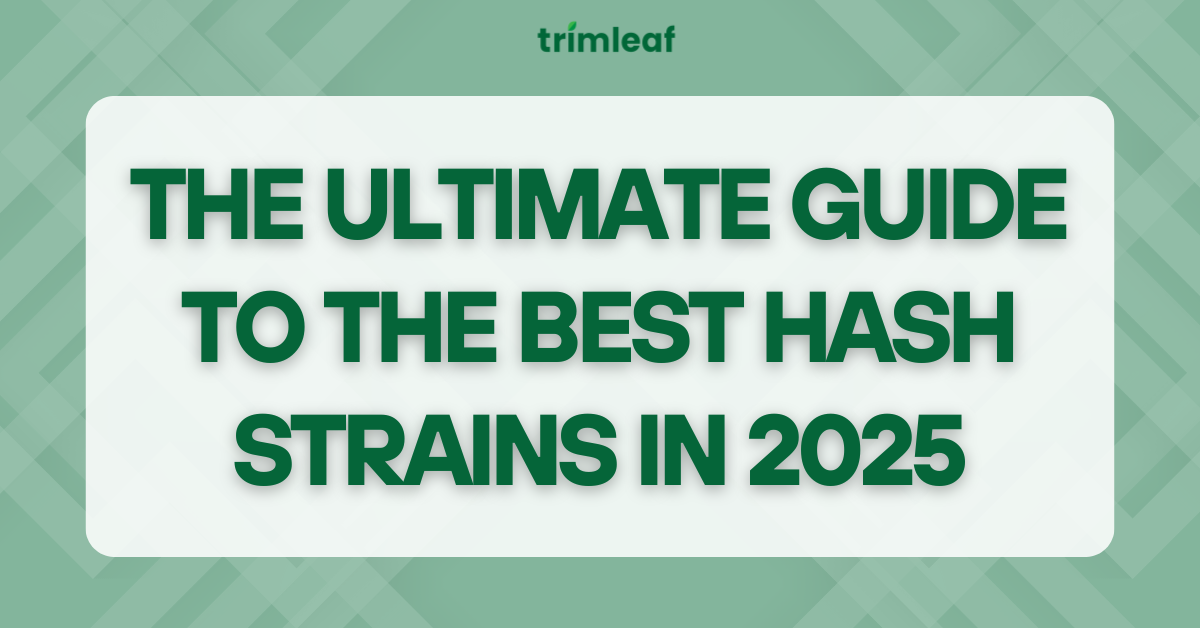
Trimming cannabis buds by hand is an art. It takes a lot of skill to make buds look good and appealing once it hits the dispensaries.
Now, there’s more to just snipping away at your buds. And even before you decide to shove your harvest to an automatic trimmer, you ought to understand how trimming is done.
Why Should You Trim Your Buds?
Trimming your buds is not just for making the buds look good. There’s a practical application behind it. First and foremost, trimming the sugar leaves helps you expose the nugs, which have more trichomes. Sugar leaves also have harsher smoke, which is separate them from the buds.
For those who trim wet, curing your buds after trimming provides for consistent moisture and give you a flavorful experience.
Trimming Wet or Dry?
Before you start trimming, you need to choose between trimming wet or dry.
Wet trimming usually happens right after harvesting your buds. You trim the buds before drying and curing them and sending them to the dispensary.
Dry trimming is the opposite, as you wait for the buds to dry and cure before bringing out your sheers to rid your harvest of its leaves.
Now, when should you do a
wet or dry trim?
A wet trim is ideal if you’re avoiding mold and humidity is high.
Wet trimming is also good when you have a lot of buds but have a small space to use. Wet trimming is also good if you want a faster drying and curing of your buds.
Dry trimming is ideal when humidity is low in your area, you can handle the mold, and want a slow drying process to avoid odors. And if appearance is also your concern, dry trimming means having a denser bud but with less vibrance.
Fan Leaves vs Sugar Leaves

When you harvest your cannabis, you’re going to encounter two kinds of leaves that you need to trim off.
Sugar leaves are the leaves that grow directly on the bud. They have a harsher flavor when smoked but may be used for edibles due to their decent levels of terpenes and cannabinoids.
Fan Leaves are the first to develop in the growth cycle and are used as indicators for plant health. They contain very few cannabinoids, but not enough to give you that high.
Some people use fan leaves for salads and may also be used for salves with their
anti-inflammatory properties.
Getting Started with Trimming
Before you even start cutting away, you need the right tools to get the best results.
Having the right tools will help you do your trims efficiently while maintaining the quality of your buds.
Here’s what you need:
- Pruning shears for trimming the sugar leaves.
- Large pruning shears or any durable scissors for cutting the branches.
- Disposable Gloves, such as surgical gloves
- 3 Trays to segregate the trims
For trimming the sugar leaves, you may also use
automatic scissors, if your resources permit. You need to have a separate set of shears for trimming the buds and taking off the branches for your plant. Some branches are quite hard to cut and the shears may get damaged or destroyed in the process.
The gloves are needed to keep your hands off the resin and avoid contaminating your buds.
Your setup for trimming should also be easy to clean. That means, avoiding carpets which can be a problem when sugar leaves fall off during trimming. Trichomes are hard to clean on such surfaces.
Keep in mind that the scent of cannabis will stick to your room, especially when trimming fresh. You may want to have good ventilation or an exhaust fan to drive out the odor unless you want your place to smell like a cannabis farm.
Before you start the actual trimming, make sure to wash your hands and put on your gloves. If you can’t use gloves, be prepared to with a lot of rubbing alcohol to rid your hands of the resin from trimming.
When taking off branches for trimming, always start from the top of the plant. The upper portion of the plant is more likely to mature first due to its exposure to the sun or your grow lights.
The lower portions might not be ready yet, thus benefitting from the additional day of exposure once the top is clear.
Now only take what you can handle. Especially when you’re set to trim a lot of buds. Taking more than what you can handle might compromise your buds.
When you’re taking out a branch, hold it at the base and cut it off. Then transfer them to your tray.
At this point, the actual trimming begins.
Trimming the Buds
Begin trimming by clearing out the fan leaves. You can dispose of them, or you may turn them into edibles later, depending on your preference.
If you plan to use them later on, separate them from your tray for sugar leaves, as mixing them will only add to plant matter that needs processing.
When it comes to trimming the sugar leaves, you don’t need to take out the whole leaf, since it goes deep inside the buds. Trying to dig in and take it out may cause damage to the buds.
Just trim off the sugar leaves to the best that you can, while avoiding damaging the buds. Go over each bud, giving it a clean look. Then put the trimmed buds on the designated tray.
In case you accidentally damaged a bud while trimming, don’t throw it away. Just add it to your sugar leaves for processing.
Once you are done trimming your buds, you can begin drying and curing them if you trimmed wet or set them aside for extraction later if you trimmed dry.
Now it’s time for clean-up.
One thing you will notice when you are done is that your scissor and gloves will be full of hash. Don’t throw that away yet. Scrape and store them in silicon canisters for use later.
You can use your sugar leaves and fan leaves for concentrates and edibles, respectively.
For the branches and the remainder of the plant that you just harvested, cut them up and put in a double bag these plant materials for disposal later. Make sure that they are rendered to an unusable state. Then take them out for disposal on the day that your trash is picked up.
Alternatives to Manual Trimming
If you think trimming buds by hand is getting cumbersome, you can consider going for an automatic trimmer. Manufacturers of automatic trimmers have widened their market reach and offer products for small-scale growers.
There are plenty of automatic trimmers in the market designed to hasten the trimming process with less effort but without sacrificing quality.
These trimmers include the
Trimbag and the
Tom’s Tumble Trimmer 1600, which trims dry buds, and the
Trimpro Unplugged, which trim wet buds.
While these machines require a little manual labor to operate, they are not as intensive as trimming per bud or branch.
And if you want to go for near-effortless bud trimming, there are small but powerful bud trimmers in the market designed for small growers.
There’s the
Trimpro TrimBox, which attaches to most tables and trims wet buds by running stalks of buds over the grill.
And there are tumbler trimmers for small-scale grows, such as the
CenturionPro Tabletop,
Twister T6, and the
Resinator OG. While small trimmers are focused on either wet or dry trimming, these trimmers listed do both quite well.
Conclusion
Trimming buds is a relatively easy affair, and it only gets tedious when you have too much to process. This is not a bad thing at all, as there are plenty of applications that you can do with these buds, aside from smoking or vaping them. That said, knowing how to trim your buds gives you a full understanding of how a well-manicured bud improves appeal and taste when consumed.



